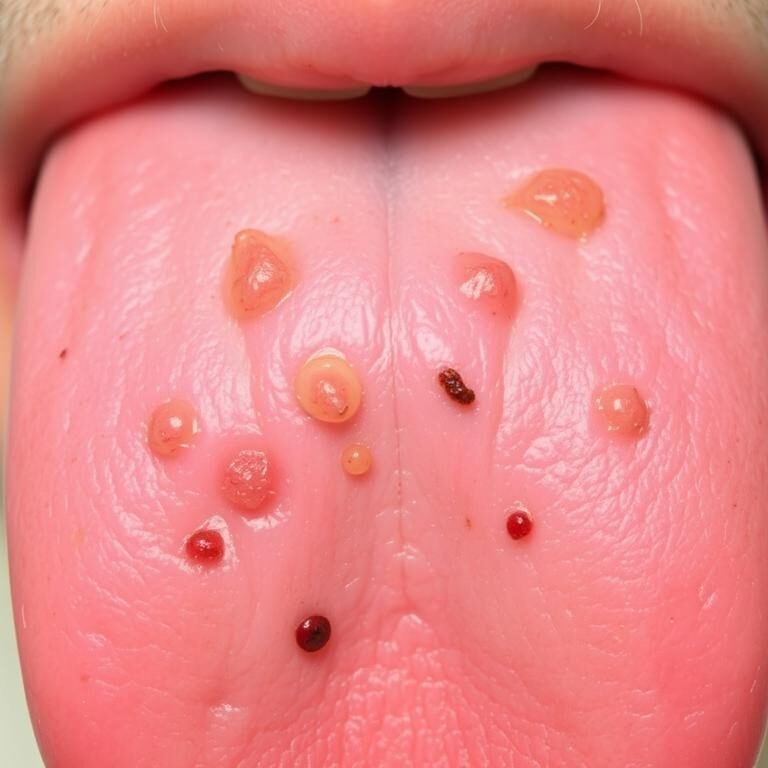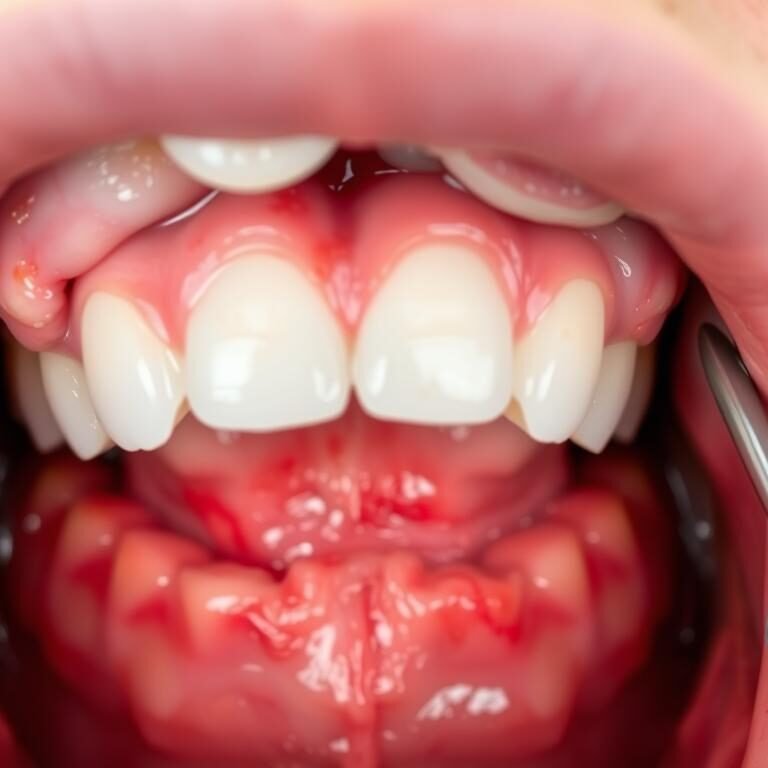Thinking about a root canal can make you feel scared, anxious, and alone. Many have heard bad things about the pain of a root canal. But, it’s key to remember you’re not alone. Every year, about 15 million Americans get this procedure done, and 90% say they felt little to no pain.
Knowing what to expect from a root canal can make you feel more in control. Even though some people might feel some pain after, it’s usually not too bad. In this article, we’ll explore the truth about root canal pain, share tips for recovery, and show you how to handle any discomfort.
Table of Contents
Understanding Root Canal Treatment
Root canal treatment, also known as endodontic therapy, helps with pain from infected or inflamed tooth pulp. Every year, over 15 million teeth get this treatment. It saves natural teeth and prevents worse dental problems. Knowing how it works helps manage pain and ensures a better recovery.
The treatment usually takes one or two visits. Dentists start with X-rays to see how bad the infection is. They then plan the best treatment. During the visits, local anesthesia is used to reduce pain. Most people find it less painful than they thought, like regular dental work.
Most dental insurance covers part of the cost for endodontic therapy. But, costs can vary based on the problem’s complexity and the tooth involved. Molars are usually more expensive because of their complex structure. Still, endodontic treatment is often cheaper than getting a dental implant or bridge.

After a root canal, patients might feel sensitivity, swelling, or inflammation for a few days. Keeping good oral hygiene is key for the treated tooth’s health. For more on root canal benefits and processes, check out this link.
Root Canal Pain: What to Expect
Knowing what to expect during a root canal can help ease your worries. Many people think root canals are very painful. But, the truth is often much like other dental procedures.
The Reality vs. Myths of Root Canal Pain
Many myths surround root canal pain. People often believe they will be in a lot of pain. But, studies show the pain is similar to getting a dental filling.
About 95% of patients feel little to no pain during the procedure. For the first 24 to 48 hours after, some might feel a bit of ache. But, for most, this pain fades quickly.
How Painful is a Root Canal? Insights from Dentists
How much pain you feel can vary. While some might feel pain for up to a year, most find it manageable. Using pain relievers like acetaminophen or ibuprofen helps many patients.
Dentists advise avoiding hard foods and keeping up with oral hygiene. This helps in recovering faster. Research shows that about 85% of patients who follow these tips recover quicker.
| Post-Procedure Pain Management | Statistical Insights |
|---|---|
| Patients reporting minimal discomfort during the procedure | 95% |
| Patients experiencing a dull ache post-procedure | 75% |
| Patients needing re-treatment | Less than 10% |
| Patients managing pain with over-the-counter medication | 80% |
| Patients experiencing pain relief after root canal | 90% |
Signs You May Need a Root Canal
Knowing when you might need a root canal is key to managing pain and saving your tooth. Symptoms show up when the pulp, with nerves and blood vessels, gets inflamed or infected. Spotting these signs early can help treat your tooth effectively.
Symptoms of Root Canal Issues
- Severe pain when chewing or biting: This could mean serious problems.
- Sensitivity to hot and cold: Pain from temperature changes might mean nerve damage.
- Swollen and tender gums: Gum inflammation could be a sign of infection.
- Discoloration of the tooth: A dark tooth might mean pulp decay.
- Chipped or fractured tooth: Damage can make teeth more prone to infection.
- Persistent bad breath or a bad taste: These could be signs of dental infections.
- Loose teeth: Teeth that move easily might be weakened by decay or infection.
Identifying Root Canal Infection Symptoms
Spotting root canal infection symptoms is vital to avoid bigger problems. Look out for these signs.
- Persistent pain and sensitivity days after dental care
- Recurring pimples on the gum near the tooth
- Gum inflammation and swelling
- High fever as a sign of infection
- Chronic bad breath from ongoing infection
- A burning feeling in the affected area
Being alert to root canal symptoms can help you act fast. This can prevent more serious dental issues.
Preparing for a Root Canal Procedure
Getting ready for a root canal means talking to your dentist and understanding what’s involved. It’s key to share any worries you have. This can help lower your stress about dental visits. Many people feel nervous about root canals, so good dental preparation is vital.
It’s important to follow your dentist’s pre-procedure advice. They might tell you not to drink alcohol or smoke for 24 hours before. These can make the procedure harder, so it’s important to prepare well for it.
Also, your dentist might suggest taking anti-inflammatory drugs like ibuprofen beforehand. This can help reduce swelling and make you feel more comfortable. Eating a light meal an hour before can also make you feel better. Getting a good night’s sleep before and after can help you heal faster.
Most patients don’t feel much pain during the procedure, thanks to modern dental tools and anesthesia. Knowing what to expect can help you feel less scared. Good dental preparation is crucial for a smooth experience. After the procedure, following your dentist’s advice can help you recover quickly. You might be back to your usual activities in just one to two days.
| Preparation Guidelines | Recommendations |
|---|---|
| Avoid alcohol and tobacco | At least 24 hours before the procedure |
| Take anti-inflammatory medications | As advised, prior to the appointment |
| Eat a light meal | One hour before the procedure |
| Get a full night’s sleep | Before and after the procedure |
What Happens During a Root Canal?
Understanding the root canal procedure can help ease fears and clear up misconceptions. Many patients worry about what to expect. The steps of a root canal are designed to ensure comfort and success, addressing any dental issues.
The Steps of a Root Canal Procedure
The root canal procedure involves several key steps. Each step is crucial for the treatment’s success:
- Administration of Anesthesia: Local anesthesia numbs the tooth and surrounding areas. This keeps patients comfortable during the procedure.
- Tooth Isolation: A rubber dam isolates the tooth. It keeps it dry and free from saliva during treatment.
- Pulp Removal: The dentist removes the infected or damaged pulp tissue from the tooth’s inside.
- Cleaning and Shaping: The dentist cleans and shapes the hollow spaces in the root canals for filling.
- Filling the Canals: Biocompatible materials fill the cleaned canals. This prevents future infections and preserves the tooth.
- Final Sealing: A sealant is applied to close the opening. It protects against contamination.
The root canal procedure usually takes 30 to 60 minutes. In complex cases, it may take up to 90 minutes. Most patients do not feel pain during the procedure, thanks to anesthesia. Afterward, any discomfort usually lasts only a few days and can be managed with over-the-counter pain medications.
Post-Procedure: Understanding Pain After Root Canal
After a root canal, patients often feel some pain. This pain is usually mild to moderate and starts within a few days. It’s a normal part of healing and should get better over time.
Research shows that up to 41% of people feel pain after a root canal. But, some signs need attention.
Normal vs. Severe Pain: What to Expect
Right after a root canal, the treated area might feel sensitive for days. About 75% of people experience this. Normal pain is usually mild soreness and swelling around the tooth.
For most, this pain goes away within a week, showing healing. But, about 10-15% might feel severe or long-lasting pain. This could mean an infection.
Studies show that up to 60% of pain after a root canal comes from inflammation or infection. Talking to your dentist is key if pain gets worse or doesn’t get better.
Signs of Infection After Root Canal Treatment
Some pain is okay, but watch for signs of infection. Swelling, fever, or intense pain mean you need to see your dentist fast. About 1-2% of root canal cases have complications, often due to gum disease.
Keep an eye on your recovery to spot infection signs. If you notice anything scary, call your dentist right away.
For normal pain, try over-the-counter pain meds like ibuprofen or acetaminophen. Avoid hard foods to not put pressure on the area. Knowing what to expect helps you heal better. For more tips, check out managing dental pain resources.
Root Canal Recovery: What to Expect
Knowing what to expect after a root canal is key. You might feel some tenderness or sensitivity for a few days. This is normal and part of the healing process. Learning about the recovery timeline helps you manage your experience better.
Typical Root Canal Recovery Timeline
Most people find their discomfort goes down within a week. You’ll likely have a follow-up appointment for a permanent fix in 1-2 weeks. You might want to take a day off if you’re not feeling well.
It’s important to remember that the treated tooth won’t hurt anymore because it doesn’t have nerve endings. But, the area around it might still be sensitive because of inflammation.
Managing pain is key during recovery. Over-the-counter pain relievers like Ibuprofen work well. If the pain lasts more than a few days, it could mean there’s a problem. Your dentist should check it out.
Keeping your mouth clean and following your dentist’s advice is crucial for a smooth recovery. For more on keeping your teeth healthy, check out this link.
Managing Root Canal Pain at Home
Dealing with root canal pain can be tough, but there are ways to manage it at home. Knowing how to find relief can make recovery easier. Over-the-counter meds and natural remedies can help a lot.
Over-the-Counter Pain Relief Options
Medicines like ibuprofen and acetaminophen are good for root canal pain. They’re easy to find and can help with pain and swelling. These meds are great for managing pain after a root canal.
Home Remedies for Root Canal Pain Relief
Using home remedies can also help with pain. Here are some ideas:
- Try a cold compress on the jaw for 10-15 minutes to lessen swelling.
- Rinse with warm saltwater to fight bacteria.
- Use clove oil for its numbing properties.
- Elevate your head to ease pressure.
- Keep your mouth clean by brushing and flossing daily.
| Home Remedy | Description | Expected Benefit |
|---|---|---|
| Cold Compress | Applied to the jaw for 10-15 minutes. | Reduces swelling and numbs pain. |
| Saltwater Rinse | Mix salt in warm water and rinse. | Antibacterial properties help reduce irritation. |
| Clove Oil | Used as a topical application. | Numbs pain effectively due to eugenol. |
| Oral Hygiene | Brushing and flossing regularly. | Prevents reinfection and promotes healing. |
Common Side Effects of Root Canal Treatment
Root canal treatments are known for saving damaged teeth. They have high success rates, but patients should know about possible side effects. Temporary sensitivity is common as healing starts. Mild swelling and jaw discomfort may also occur.
These symptoms usually go away as the body heals. The risks of root canal procedures vary. Discoloration of the treated tooth happens in 15% to 30% of cases.
Headaches and congestion can occur if the procedure affects nearby sinuses. Reinfection is a risk if treatment is not done right. Choosing an experienced endodontist is key for the best results.
Seal failure is another concern. It lets bacteria back into the tooth. Regular follow-up appointments are crucial. With proper care, complications can be less likely.
Teeth treated by root canal may become more fragile. They can break more easily without a dental crown. Rarely, allergic reactions to anesthesia used during the procedure can happen.
Food and Drink Recommendations After a Root Canal
Choosing the right food after root canal is key for a smooth recovery. Wait 30 to 45 minutes before eating to avoid biting your cheek or tongue. Stick to soft foods that don’t need much chewing to protect the treated area and manage any sensitivity.
Avoid hot, cold, sticky, chewy, hard, and crunchy foods. They can irritate the tooth and slow healing. Instead, eat high-protein and nutritious foods. Yogurt, eggs, and soft fruits like peaches and bananas are great for healing.
Stay hydrated with gentle drink after root canal options. Avoid drinks that are too hot or cold, or have lots of sugar. Bone broth is a good choice because it’s full of nutrients that help with recovery. Once your permanent restoration is in, you can slowly go back to your usual diet, watching for any discomfort.
| Type of Food | Recommended Options | Foods to Avoid |
|---|---|---|
| Soft Foods | Yogurt, scrambled eggs, applesauce, mashed potatoes, soft fruits | Hard breads, raw vegetables, popcorn, nuts |
| Hydration | Water, herbal teas, bone broth | Cold drinks, sugary beverages |
| Sweets | Soft pudding, gelato, smoothies | Sticky candies, hard chocolates |
Talking to your dentist about dietary choices can give you personalized advice. Eating soft, nutritious foods helps your body heal after a root canal.
When to Call Your Dentist After a Root Canal
After a root canal, it’s important to watch how you’re feeling. Some pain is normal, but certain signs might mean you need to see your dentist again. Knowing when to call can help your recovery go smoothly and catch any problems early.
Signs that Your Recovery Isn’t Going Well
Watch out for these symptoms that could mean something’s not right:
- Severe Tooth Pain: If the pain is really bad and keeps you from eating or sleeping, you need to call your dentist right away.
- Persistent Swelling: If your face or the area where you had the root canal is swelling a lot, it might mean you have an infection.
- Fever: Having a fever after a root canal is not normal and means you should see your dentist.
- Ongoing Soreness: Some soreness is okay, but if it lasts more than a few days, it’s time to call your dentist.
Most people recover well from a root canal. But, it’s key to follow your dentist’s advice on what to eat and how to manage pain. If you notice anything off, don’t wait to call your dentist. Catching problems early can make a big difference in how well you recover.
| Symptom | Severity | Action Required |
|---|---|---|
| Severe Tooth Pain | Critical | Contact dentist immediately |
| Facial Swelling | Moderate to Critical | Make an appointment for evaluation |
| Fever | Moderate | Seek medical attention |
| Localized Soreness | Low | Monitor, but notify if prolonged |
Being careful about your recovery can help you know when to call your dentist after a root canal. Watching for these signs can help you avoid problems and get the help you need quickly.
How Long Does Root Canal Pain Last?
Knowing how long pain after root canal treatment lasts is key. Right after, most people feel some pain. This pain is usually mild and can be eased with over-the-counter drugs like ibuprofen or acetaminophen.
After a few days, the pain often gets better. Most people see a big drop in pain within a week. If you’re wondering how long does root canal pain last, it might take up to two weeks to fully heal. It’s normal to feel some tenderness, like when you chew or when your food is hot or cold.
The table below shows what to expect with pain after a root canal:
| Time Frame | Typical Pain Experience | Recommended Action |
|---|---|---|
| Day 1-3 | Mild to moderate pain | Use NSAIDs and rest |
| Day 4-7 | Significant pain improvement | Continue with pain relievers if necessary |
| 1-2 weeks | Pain should be mild | Monitor symptoms |
| Beyond 2 weeks | Persistent severe pain rare | Consult dentist if pain continues |
Most people don’t feel much pain or only a little after a root canal. But, if the pain lasts more than three days, it could mean there’s a problem. You should see a dentist. For more on root canals versus other treatments, check out this resource.
Tips for a Smooth Root Canal Recovery
Recovering from a root canal can be easy if you follow some key tips. Good oral hygiene is crucial during this time. It helps prevent infection and speeds up healing.
Importance of Oral Hygiene During Recovery
Keeping your mouth clean is vital during recovery. Here are some important practices:
- Gentle Brushing: Start brushing your teeth gently when you can. Don’t brush too hard on the treated area.
- Regular Flossing: Flossing removes bacteria and debris. Be careful around the treated tooth.
- Warm Salt Water Rinse: Gargling with salt water can ease pain and help heal.
- Avoid Irritants: Don’t use tobacco or alcohol. They can slow healing and increase infection risks.
- Temporary Crown Care: Clean your temporary crown with regular brushing and flossing to avoid problems.
By following these oral hygiene tips, you can reduce discomfort and recover smoothly. Paying attention to your dental care is key to a successful recovery. It helps you get back to normal activities quickly.
Long-Term Care for a Tooth with a Root Canal
Keeping a tooth healthy after a root canal needs careful long-term care after root canal treatment. This means regular dental visits and good oral hygiene. Also, getting a crown can help make the tooth stronger and last longer.
Going to the dentist every six months can cut down on problems by up to 50%. Dentists might take x-rays to find hidden infections early. About 25% of people have infections without any symptoms.
Proper dental care for root canal teeth means brushing, flossing, and eating right. Eating foods high in calcium can help the tooth heal and prevent future problems by 30%. Avoiding sugary and acidic foods can also lower the risk of cavities by 60%.
The table below shows key steps to keep a root canal-treated tooth healthy:
| Care Practice | Effectiveness |
|---|---|
| Regular dental check-ups | Reduces complications by up to 50% |
| X-rays during check-ups | Identify issues in 25% of asymptomatic patients |
| Good oral hygiene | Decreases pain and complications by up to 40% |
| Calcium-rich diet | 30% lower chance of follow-up issues |
| Limit sugary and acidic foods | Decreases cavity risk by approximately 60% |
By following these steps, you can keep your tooth healthy and the root canal effective. Learning about dental care after a root canal helps your tooth stay healthy for a long time.
Alternatives to Root Canal Treatment
When you face dental problems, knowing your treatment options is key. For some, looking into alternatives to root canals might be the right choice. This choice depends on the tooth’s condition and your overall dental health.
Extraction vs. Root Canals
Every year, 15 million teeth in the U.S. get root canals. These treatments fix damaged teeth and work well over 90% of the time. Most people don’t feel much pain during the procedure. Yet, some might think about tooth extraction, which happens to about 5 million teeth each year due to decay or damage.
Here are a few key differences between these two options:
| Criteria | Root Canal | Tooth Extraction |
|---|---|---|
| Preservation of Tooth | Preserves natural tooth structure | Removes the tooth entirely |
| Pain Level | Generally minimal during the procedure | Post-extraction pain may occur |
| Cost | $300 to $2,500 depending on complexity | Generally lower, depending on method |
| Longevity | Can last many years, if not decades | Replacement options (implants, bridges) needed |
| Recovery Time | Longer recovery | Shorter recovery, but may need replacements |
There are less invasive and often cheaper alternatives. For instance, pulpotomy and direct pulp capping are gaining fans, mainly for kids with small pulp exposure. These methods aim to keep as much of the tooth as possible while treating the problem. Your choice will depend on your dental situation and what you prefer.
Conclusion: Ensuring a Successful Recovery
Understanding root canal treatment and recovery is key for a smooth healing. Most people feel mild to moderate soreness for a few days. It’s important to watch this pain as it usually gets better in a week.
Using ibuprofen and cold compresses can help a lot. These methods can reduce pain and swelling, making your healing easier.
Good oral hygiene is also crucial. Brushing twice a day and flossing daily helps prevent infections. Eating soft foods in the first days helps too. This way, you can avoid irritating your mouth and support healing.
Most people find that sensitivity and pain lessen over time. This makes your recovery successful.
Knowing when to see your dentist is important. Look out for signs like severe pain, swelling, or bad breath. Seeing your dentist early can help your recovery stay on track.
By following these tips, you can enjoy your tooth’s health for a long time after the root canal.
FAQ
Are root canals painful?
Many think root canals hurt a lot, but they’re often as painful as a filling. The anesthesia makes the pain much less.
How painful is a root canal?
Right after, you might feel some pain or tenderness. But this usually goes away in a few days.
Does a root canal hurt?
Root canals don’t usually hurt, thanks to the anesthesia. You might feel a bit sore after, but it’s easy to manage with pain meds.
How long does root canal pain last?
Pain from a root canal usually fades in a few days. Most people start feeling better within a week.
What are the signs of infection after a root canal?
Look out for fever, constant or sharp pain, and swelling. If you see these signs, call your dentist right away.
How long does a root canal last?
With good care, a root canal can last many years. Regular dental visits and clean teeth are key to keeping it going.
What are the symptoms of root canal issues?
Signs you might need a root canal include severe pain when chewing, sensitivity to hot or cold, and a darkening tooth. Catching these early can help.
What should I avoid after a root canal?
Stay away from hard, hot, and cold foods to avoid sensitivity. Soft foods are best during the first few days.
What can I do to manage root canal pain at home?
Use over-the-counter pain meds like ibuprofen and a cold compress to ease swelling. Warm saltwater rinses can also help.
What is the root canal recovery timeline?
Recovery from a root canal usually takes a week. You might still feel some sensitivity, but it should get better as you heal.
Can a tooth with a root canal hurt years later?
Yes, some people may still feel pain in a tooth with a root canal. Watch for any changes and see your dentist if needed.
What are the common side effects of root canal treatment?
You might feel some tooth sensitivity, swelling, or jaw discomfort. These usually go away as the tooth heals.
When should I call my dentist after a root canal?
Call your dentist if you have severe pain, swelling, or fever. These could be signs of a problem that needs a dentist’s help.











